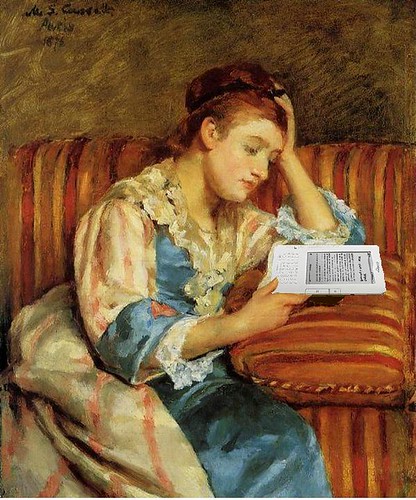
With the encouragement of colleagues who have read, responded to, questioned, tweeted, retweeted, and otherwise pushed my thinking on digital reading over the past week, I want to bring this series to a close (for now). There will be more to come as Kristen and I continue to work on our book for NCTE, and I am scheduled to talk with Heidi Perry and Sydnye Cohen tonight on the Reading Room webcast. I love the interwebs and my PLN.
At any rate, I am feeling the need to bring some closure to all that I have composed this week. And, as a writing teacher, I want to rethink that old adage that we should “read like writers” and turn it around to think about how we can “write for readers,” especially in digital contexts. This is not a comprehensive list, but just a few thoughts that I wanted to get down before my ideas about digital reading strategies escapes me.
- First, we need to help students navigate different forms of digital writing.
- In one sense this is obvious, but perhaps it really isn’t for our students. Reading a basic ebook is different than reading a webpage in a browser is different from reading an RSS feed is different from reading a mulitmedia ebook. In short, the device may be the same, but our comprehension strategies need to be very different.
- Second, no matter what the format, we still have to guide kids to carefully consider their digital reading.
- I helped my daughter set up her Feedly account last night and, along with cute pictures of puppies (which was easy to find), I also helped her subscribe to the CNN student news (which was not so easy to find). They need a good variety of text types and topics, and we can’t rely on them to use the tools to find this variety on their own.
- Third, we really need to better understand the intersections between digital literacies and comprehension instruction, especially in this new era of “close reading” proffered by the CCSS.
- Because it is, quite literally, not to mention metaphorically impossible to keep students within the four corners of the page for close reading, we need to consider how digital reading tools can and should be used to help kids read, comprehend, and respond to texts in critical and creative ways. I am reading the Jenkins et al book about this right now. Also, I trust other teacher leaders who are on the cutting edge of thinking about close reading, like Christopher Lehman and Kate Roberts. We need to be vigilant in the ways that we describe smart digital reading practices, especially vis-a-vis the current conversations about “close reading.”
For sure, there will be more thinking on all of this coming from me in the next few weeks as I visit some classrooms in Michigan and as Kristen and I continue work on the book. For the moment, I thank everyone for your thoughts, questions, and contributions to my series on thinking about digital reading. I look forward to continuing the conversation.

This work is licensed under a Creative Commons Attribution-NonCommercial-ShareAlike 3.0 Unported License.
